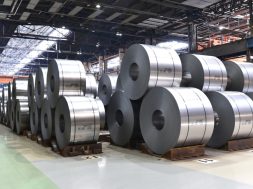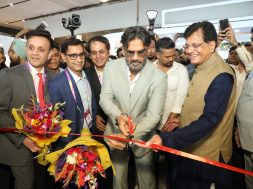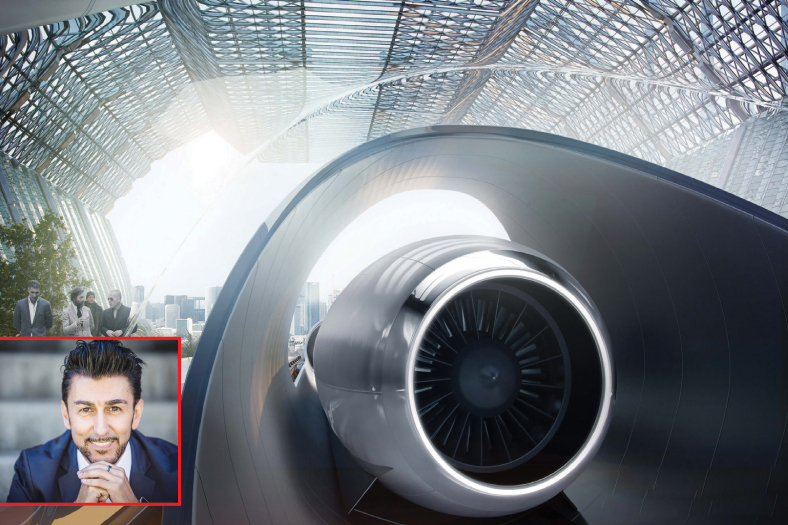ARCHITECTURE – In harmony with precision
Talking about the importance of planning to the challenges of restoration and suggesting alternatives to combat global warming, Architect Brinda Somaya shares her views on the significance of contributing to the society in one’s own way. Edited excerpt from her interview with Relin Hedly
What inspired you to become an architect?There were several things that inspired me, not one particular thing. At the age of 13, I knew that I wanted to be an architect. There were no architects in the family but my elder sister was studying architecture.
As a women architect what were the challenges you faced while entering the industry?Architecture is a profession that I enjoyed and loved. I just went ahead and did what I thought I believed in. I studied in Mumbai which instilled confidence and independence in young people. There was a quiet confidence that we just believed in ourselves and if you want something and want to do it, you should go ahead and do it. Of course we worked hard and it wasn’t easy.
Problems exist for men and women and one has to move ahead. It was true that there were very few women architects in the earlier days. We were only 10 per cent of our class and now it is 50 per cent. I did not start a big organisation overnight. I built it up slowly with my work, built a relationship with clients, then had a lot of repeat clients and proved my capability. It was similar to building up a practice for a doctor or a lawyer or an architect at that time.
The reason there were only 10 per cent of women architects at that time is because architecture as a profession itself is relatively new. Until the British were here, it was the engineers who designed most of the buildings. In that way it’s a relatively new professional degree and that’s why it took time for women to enter this profession. Architecture was definitely dominated by men around the world as a profession. I would say it’s tough and difficult and not as easy as it sounds. It not only involves sketching and drawing and thinking about wonderful creative things, but about converting ideas into reality and that conversion is very difficult, it’s not easy to do, to do well, to do within budget, within time, so the challenges are many. I think 10 per cent women at that time was okay as we are talking about the late 60’s and early 70’s and the fact that it has gone up to 50 per cent women now shows the overall change about the status and position of women around the world.
According to you what is the importance of proper planning in the field of architecture and is it being implemented the way it should be. If no, what are the hurdles faced?I would say there is definitely a weakness in planning and this is because of many reasons. One is we have had huge growth in terms of population within the country and there has been a huge migration influx as well. So both ways the cities have grown exponentially. So, expansion of the city has overtaken the planning process and secondly, the planning process within the cities is weak. We didn’t have a good development plan for the cities and that now is slowly coming in. Now we have people, government and planners who are realising the importance of planning for the future.
The combination of lack of vision and planning with this huge growth and influx from the smaller towns has caused a lot of chaos in the cities. It was an urban nightmare that was waiting to happen. People have been talking about this for many years. We also need money to improve the infrastructure. Earlier as we know the government did not pay much attention to it, but now for the last 10 years, there has been a realisation that a problem exists. We see infrastructure improving in the cities. However with growth and infrastructure come other problems of the city because improving infrastructure within crowded cities is very complex. For example, the Metro coming in Mumbai, the underground coming in Delhi and Kolkata; there are problems that come with that. So the issues are very complicated. The issue of housing, issue of slums, inadequate affordable housing is one of our biggest problems. And until we are able to have affordable housing for all our people, our cities are always going to be in this kind of situation. So there are several complex interconnected aspects to planning and it has to be addressed. Additionally, there has to be a political will as well. It can’t be that only the citizens want change and unless the politicians and government also want it, its not going to translate into reality.
The buildings that the British built are still intact, why are today’s buildings falling off in 10 – 20 years?According to me two aspects are important for buildings. One is that they have to be built well, which means the materials that go into the buildings have to be of certain quality, the standards of construction has to be good, the detailing of the building has to be good, so architects have to detail it well. Maintenance is the second most important aspect. If a building is not taken care of, it will certainly deteriorate.
You have been involved in a lot of restoration work one of the examples being the Cathedral School, what are the challenges faced while working on such projects?Restoration has its many challenges because there are many types of conservation. One is the reverential conservation like if you conserve the Rajabhai Towers which we are going to be restoring or the VT station and buildings of that importance. Then there are types of progressive conservation or reuse or re-architecture or recycling or retrofitting where you are expanding existing buildings or changing the use of the building. So, the challenges are also varied.
There is not one set of challenges for conservation. It depends on the condition of the building, whether any interventions are taking place, what was the old use of the buildings, what is the new use going to be, how to change the internal aspects of the building and how to make it relevant to 2012 or 2020 because people’s requirements have changed. Technology has changed; the world is changing, so the interiors of the building also have to change to accommodate the changing needs of young users. Each restoration project that we have done is different from the other. The Cathedral project involved restoration and expansion, then we have done Tata Consultancy Services House, in which we kept the shell and demolished and rebuilt the interiors.
What are the new trends you are coming across in the field of architecture?Well I think India is changing, the scale of projects is changing with more ambitious projects, bigger projects. Lifestyles are changing, people have higher and unique aspirations. Educational campuses are coming up, IT campuses, institutional buildings, recreational buildings, shopping, hospitals, there are so many new cities coming up. Therefore, I see huge opportunity for young architects.
The scale has grown as there is more money in the country and new materials and technologies are available. Knowledge with the internet has revolutionized every profession.
The building industry is the single largest contributor to global warming producing an estimate 43 per cent of all carbon emissions, how can this be avoided? According to me, one of the biggest aspects is the air conditioning systems. I think we have to think about alternatives. There are lot of alternatives available. For example we don’t have to air condition an entire building. The location of the building should be considered, how to take care of the solar radiation, then we can decide on the most efficient system. We try to use natural wind to cool areas, create shade through pergolas and the location of the window openings etc. You can’t just get a box and say I will make it sustainable.
Further, we also have to decide about the embodied energies of the existing building because every time we break down a building, we are wasting a huge amount of energy because the materials that have gone into that building are wasted. So where we can save a building or restore it and at the same time upgrade it and make it relevant for the next century should be done. Today we are a young country and we want to see buildings that also look young. So you need to have that balance. It’s not that everything that is a glass box is good or bad; everything that is a historical building is good or bad. But at least we should apply our minds and understand how to create a balance of the built form within the country.
Could you tell us about Jugaad Urbanism?It was a conference and exhibition held in New York. I was also one of the panellists invited by the American Institute of Architects to go for this conference. Essentially it was about India, India is also the flavour of the month in many parts of the world and it talks about how Indians are innovative in their cities because things are not easy and sometimes support is not there. It spoke about how Indians are innovative, how you can make things work with simple unconventional methods. That’s the idea of the word ‘Jugaad’ and they have applied it to urbanism to show how innovative ways are used in the cities by individuals or groups of people to make things work when the support systems is absent, the infrastructure is not there and money sometimes is not available.
Your message to budding architectsI have always been very optimistic and there are great young architects in our country today and I am sure they will take India on the world map of architecture; I have no doubt about it. I just hope that everybody keeps their feet on the ground. We should also remember that half of our population needs are very severe and being an architect cannot be just for the rich and famous and your responsibility should also be to build in the rural areas and in smaller towns and for people who are less privileged, I think one part of everyone’s practice must be towards the less privileged. It will make a big difference.
I don’t see myself as being a woman and architect as separate. We are a sum total of what we are and I am what I am because I enjoy being an architect and I enjoy being a woman. I love my work and my country and am very happy and privileged that I have been able to work and live here for three decades.
Cookie Consent
We use cookies to personalize your experience. By continuing to visit this website you agree to our Terms & Conditions, Privacy Policy and Cookie Policy.






